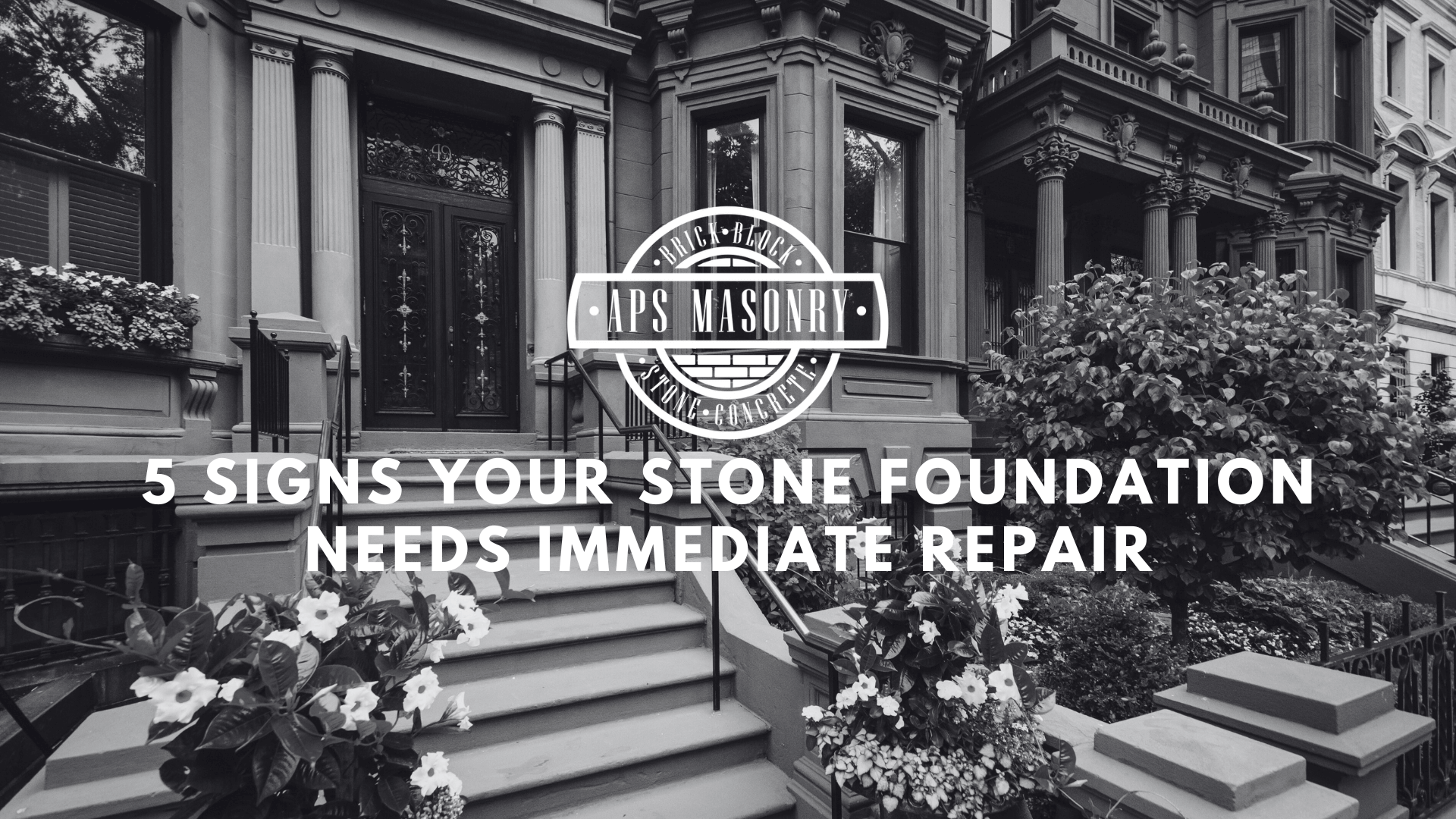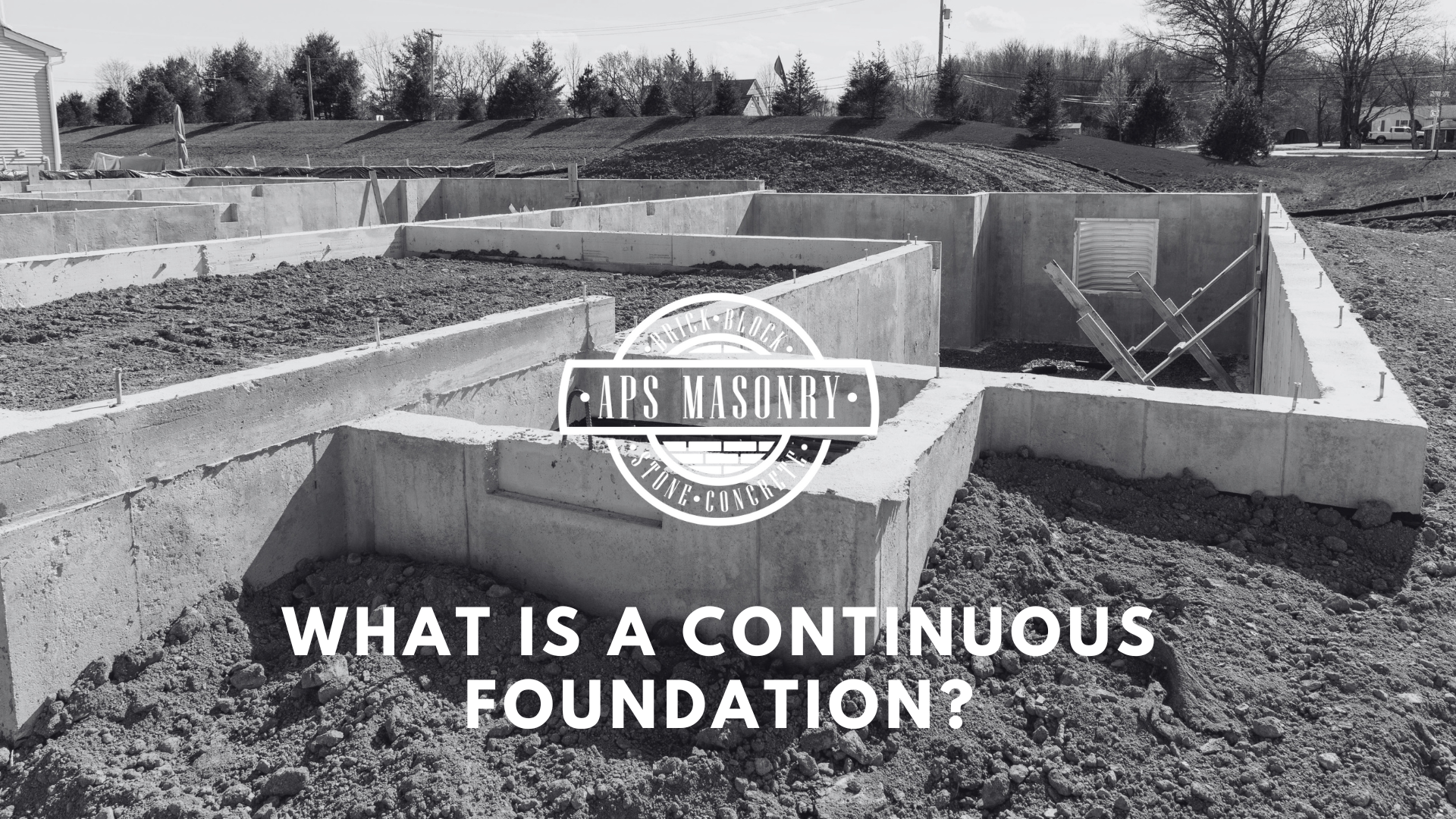Stone House Restoration in Chestnut Hill
Preserving the stonework of Chestnut Hill homes takes more than good materials—it takes skilled masons who know the history behind every joint.
5 min read
 Alec Serowatka
:
Jun 26, 2025 9:15:00 AM
Alec Serowatka
:
Jun 26, 2025 9:15:00 AM

Stone foundations are a staple in Philadelphia’s historic homes. From South Philly rowhomes to Mount Airy twins, these structures were built to last—but even the strongest foundation needs help when time, water, and weather start breaking it down.
Stone foundations are a staple in Philadelphia’s historic homes. From South Philly rowhomes to Mount Airy twins, these structures were built to last—but even the strongest foundation needs help when time, water, and weather start breaking it down.
If you're seeing visible cracks, stuck doors, or uneven floors, you may already be dealing with foundation issues. And if you’re ignoring mortar joints that crumble or a crawl space that’s suddenly damp, that puts your home’s foundation at risk of extensive damage.
Philadelphia summers aren’t kind to old foundations. Rapid soil movement, sudden storms, and hydrostatic pressure create the perfect storm for foundation cracks and moisture infiltration. Small issues in June become major repairs by August.
We have for you the five most common—and most critical—signs that your stone foundation needs immediate attention. We’re not guessing here. These indicators are backed by what we see in the field every season, especially in homes with aging concrete foundations and outdated drainage systems.
If you notice any of these issues, don’t wait for the next storm to make them worse. Call APS Masonry Contracting today for a professional assessment and protect your home from costly repairs.
Visible cracks are not cosmetic. They’re physical evidence of foundation movement, material fatigue, or external pressure acting on your stone foundation. The shape and direction of these cracks tells you exactly what’s happening.
Vertical cracks are common in concrete foundations and often result from natural settling. While they can start as hairline cracks, they may widen over time if water or soil movement continues unchecked. Horizontal cracks, on the other hand, signal pressure from the outside—usually hydrostatic pressure caused by saturated soil or improper drainage. These are red flags. Diagonal cracks typically point to uneven foundation settling or shifting.
Philadelphia’s older homes—especially those built before 1940—are particularly prone to this. According to FEMA, over 60% of U.S. homes with foundation problems showed early signs through minor wall cracks that were ignored. In a city where clay-heavy soils expand and contract with heat and moisture, those minor cracks can quickly evolve into extensive damage.
Use a flashlight and check your basement walls for gaps, crumbling edges, or misaligned mortar lines. If cracks reappear after patching—or grow past 1/8 inch—they need immediate attention from a foundation repair professional.
When doors stick, floors dip, or light peeks through unexpected gaps near window frames, your home's foundation is shifting. These aren’t surface problems. They’re physical outcomes of deeper structural issues tied to foundation movement and soil erosion.
In Philadelphia, older homes with stone foundations experience cyclical stress. Summer brings high heat followed by heavy rainfall, causing the soil to contract and swell. This movement disrupts the alignment of framing, leading to uneven floors, warped door frames, and misaligned windows.
These signs show up long before cracks appear. When the frame of the house no longer sits flush on a stable concrete foundation, everything above starts to shift. These early indicators suggest the foundation is no longer level, often due to localized settling, drainage issues, or deteriorating subgrade conditions beneath the structure.
According to the American Society of Civil Engineers, foundation settlement is one of the most common structural issues in U.S. homes, with uneven floors being a leading early warning sign.
If your hardwoods slope or your interior doors rub the jamb, it’s not wear and tear—it’s the result of ongoing foundation problems that require professional diagnosis and correction.
If your concrete foundation is showing signs of stress—hairline cracks, uneven floors, or shifting walls—don’t wait for the damage to deepen.
Stone foundations rely on mortar joints to maintain their shape, strength, and load-bearing integrity. When mortar begins to crack, fall out, or degrade, the stones lose their bond—creating structural vulnerabilities that quickly escalate.
In many older Philadelphia homes, especially those built before 1930, original mortar has aged well past its design life. Summer humidity accelerates decay. Rain penetrates weak joints, triggering moisture damage, while dry heat causes expansion that leads to crumbling mortar. Together, these cycles compromise your foundation walls.
Missing mortar allows water and air to infiltrate, weakening internal support. When repairs are done without addressing the root cause, like improper drainage or a shifting foundation, the same issues return. Applying fresh mortar over crumbling joints without structural stabilization is like painting over rust—it hides the problem without fixing it.
The National Park Service notes that repointing stone foundations with the wrong mortar mix or skipping prep work leads to further deterioration, especially under fluctuating moisture conditions.
If you can flake off mortar with your finger or see gaps wider than a pencil, your stone foundation is compromised and needs immediate attention.
Moisture in a crawl space or basement is more than a nuisance—it’s proof that your foundation is no longer sealed from outside elements. Summer in Philadelphia brings frequent downpours that overwhelm aging drainage systems, especially in older neighborhoods where proper drainage was never built to modern standards.
When water enters, it saturates the surrounding soil, increasing hydrostatic pressure against your foundation walls. This pressure forces moisture through small openings, foundation cracks, or mortar joints, even if you don’t see visible damage. Over time, this leads to moisture infiltration, weakening the structure and creating ideal conditions for mold and mildew.
According to the Environmental Protection Agency, indoor moisture contributes to nearly 85% of residential mold problems—many of which stem from foundation leaks or poor crawl space ventilation.
Warning signs include damp or musty smells, condensation on walls, visible water pooling, or efflorescence (a white, chalky deposit on masonry). These symptoms require action—not monitoring. Without correction, moisture leads to foundation damage, air quality issues, and eventually major structural repairs.
Moisture in your basement is a red flag. Don’t wait for it to turn into foundation cracks, mold growth, or structural damage. APS Masonry Contracting provides expert basement waterproofing services tailored to Philadelphia’s soil, climate, and building types.
Movement in your home—no matter how slight—is a call to act. Subtle shifts in floor elevation, widening cracks, or doors that used to close cleanly but now stick all point to a shifting foundation. These aren’t quirks of an old house—they’re progressive symptoms of deeper structural issues.
The mistake many homeowners make is watching and waiting. But foundations don’t correct themselves. Soil erosion, tree roots, and poor grading around the perimeter continue to put uneven pressure on foundation walls, often accelerating damage to the structural integrity of your home during Philadelphia’s wet summers.
A thorough inspection from a qualified structural engineer identifies the root cause—whether it’s improper drainage, underlying foundation movement, or undetected voids beneath the concrete foundation. This isn’t just about what you can see. It’s about what’s shifting below.
Data from the Foundation Repair Association shows that early detection and targeted repair reduce the cost of major structural repairs by over 40% compared to cases where signs were ignored for six months or more.
If you’ve noticed even one of the signs we’ve outlined—don’t wait for a second. Getting a professional look now prevents more extensive damage later.
Every crack, slope, or seam tells you something about your house. Pattern recognition is a far greater tool in your box than panic. These five signs are structural signals asking you to take action, not later, but now.
A stable foundation means more than dry walls and level floors. It’s about the long term stability of your entire property and the reason is that water doesn’t pool, bricks don’t shift, and doors don’t drag. The difference between a small repair and an invasive reconstruction is financially massive to you: Small crack repairs may cost under $500, but ignoring them can push costs beyond $20,000 in severe cases.
If you’ve noticed gaps, crumbling mortar, or consistent water pooling, that’s the time to bring in a professional—not when the damage becomes visible from the outside. And yes, we check every inch—no guesswork, no generic fix. A proper home inspection lets us determine what your foundation needs and how to fix it for good.
You don’t need a dust mask and a flashlight. You need a crew that understands Philadelphia’s soil, its layered stone construction, and what decades of weather do to a foundation.
Call APS Masonry Contracting today for an expert inspection and protect your property before the cracks widen.

Preserving the stonework of Chestnut Hill homes takes more than good materials—it takes skilled masons who know the history behind every joint.

A continuous foundation, or strip footing, is a simple and cost-effective way to support your building. It’s a reinforced concrete strip that runs...

Stone masonry techniques in Chestnut Hill built to last. APS delivers quality craftsmanship, masonry repair, and full restoration for historic homes.